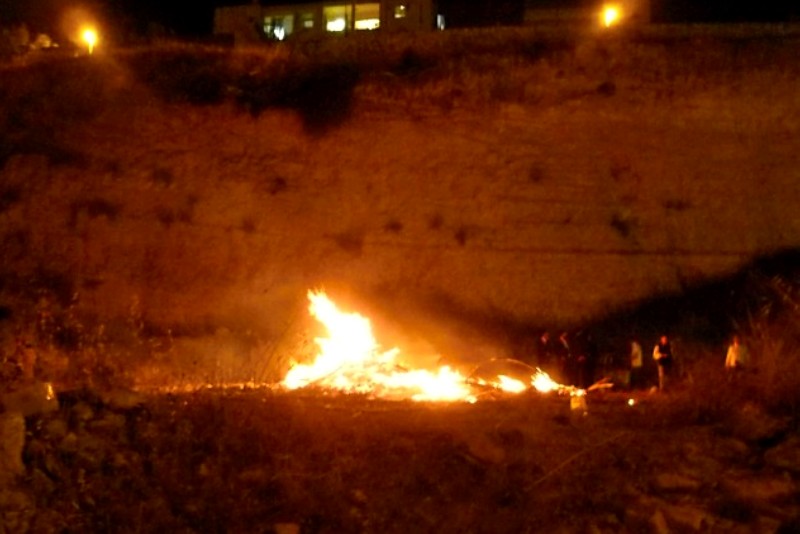This Sunday counts the 33rd day of the Omer, or the period between Passover and Shavuot, when the Omer barley offering was brought in the Holy Temple. Lag Ba’Omer, as it is known, derives its name from the Hebrew system of numerology, or gematriya, which assigns numerical values to the Hebrew alphabet. According to gematriya (from the Greek word for geometry), the letters lamed and gimmel (sounded out as “lag” when read together) correspond to the number 33; “Lag Ba’Omer” thus translates as “33rd of the Omer.”
Since the first century CE, Lag Ba’Omer has been a day of celebration, as according to tradition, the disciples of Rabbi Akiva ceased dying from a devastating plague on that day. Since the second century, it has also celebrated the revelation of a significant portion of Kabbalah by Rabbi Shimon bar (son of) Yochai, one of Rabbi Akiva’s surviving students, on the same day as well. Customs corresponding to Lag Ba’Omer include visiting the graves of Rabbi Shimon bar Yochai and his son, Rabbi Elazar, in Meron, Israel; distributing a set amount of wine and refreshments to visitors to the grave site in hope of Divine assistance; cutting the hair of three-year-old boys for the first time; and archery activities. (For more information and a deeper perspective about Lag Ba’Omer, check out Angelina Ellyason’s article in Ha’Am’s spring print edition, coming out next week.)
In Israel, children build neighborhood-wide bonfires in empty lots, saving and collecting wood for months in competition for the largest bonfires. You can build your own Lag Ba’Omer bonfire following the instructions below. (You can use an outdoor gas range instead if you are an environmentalist or a wimp.)
NOTE: When building a fire or standing near it, avoid wearing clothing with loose or gauzy sleeves or excess fabric or belts that may get blown around. You can do steps 1-6 in advance.
How to build a Lag Ba’Omer bonfire:
1. Hunt down dry tree branches and leaves, old wooden furniture and doors, and any other wood-based, unpainted material. Or go to Lowe’s, Home Depot, Smart and Final or the like and buy the expensive, pre-cut logs. You will need both tinder (the material that transfers the spark from the ignition) and kindling (the material that burns long-term). Pre-cut logs work only as kindling; a handful of dryer lint makes great tinder.
2. Buy a fire extinguisher. If you already have one, make sure that it still contains liquid. Keep it next to the area where you build the fire, along with a bucket of water and a quantity of loose dirt or sand.
3. Clear a circular space on the ground, whether dirt or concrete. It should be at least 4 feet in diameter. Ring the periphery with stones to insulate the bonfire.
4. Prepare food to roast in the bonfire. Potatoes are traditional, but hot dogs and marshmallows are also favorites. I’ve also tossed in a kohlrabi, with delicious results, and you can put in apples as well. Wrap scrubbed potatoes or other scrubbed items individually in aluminium foil ahead of time.
5. The easiest and most efficient bonfire structure is the tepee. Pile some of the kindling loosely in the center of the fire ring, making sure that the pieces are close enough to catch fire from each other but with enough space to allow for air circulation.
6. Place the tinder on top of the kindling. Arrange more kindling around the tinder in the shape of a cone, with the tips of pieces resting against each other. Place foil-wrapped potatoes or items for roasting just inside the cone. Keep a store of more kindling on hand, since the tepee arrangement is hottest and burns through wood quickly.
7. Ignite the kindling either by dropping a lit match onto the tinder or by touching the end of a lighter to it. The fire should creep up and along the cone. It may take a few tries to get the fire to start, especially if the fuel is not completely dry.
8. Gather your friends, toast marshmallows and sing songs! Traditional songs include “Bar Yochai” (composed by Rabbi Shimon ben Labia), “Va’amartem Ko Le’Chai” (Rabbi Yosef Chaim of Baghdad), and “Ve’Ahavata Le’Reiacha Kamocha” (excerpt from Sifra on Leviticus, 19).
9. After about an hour, carefully remove the roasted food, which should be cooked through and very hot. Add more kindling to the fire by leaning more wood against the cone. To extinguish the bonfire, sprinkle water over it until the flames have died down, then slowly pour small amounts of water until it is out. Toss dirt or sand over the remains to smother the cinders and stamp over the wood (in thick-soled shoes) to ensure that no embers remain.

